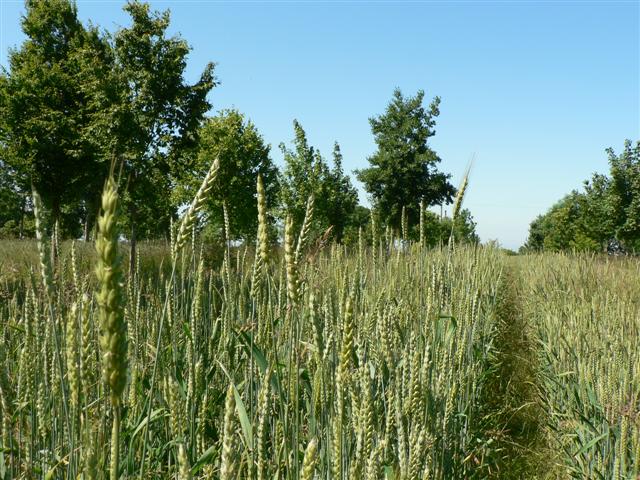ORC Researcher Dr Colin Tosh recently developed a new framework for modelling the dynamics of agroecosystems, and here you are given full interactive access to these models.

One thing that ORC prides itself on is making its research available to farmers, growers, and the public. This is usually in the form of online or in-person webinars, on-farm events, or articles, but on this occasion, we tried our hand at a bit of coding and software development.
Colin Tosh, ORC Senior Agroforestry Researcher, recently published a new model of how the living things in arable agroecosystems interact, both in the presence and absence of in-field trees. This model was used to investigate how trees might buffer crop yield stress events such as crop pest or disease outbreaks, and in a forthcoming paper, it investigates how pesticides impact the ecosystem services that trees provide for arable farmers.
The usual course of events after publishing a simulations model in the academic press is for it to be paraded at academic conferences and used by a handful of experts to address issues on a handful of farms. We are determined that this new model will be used more widely than this, so we have developed a free online app that allows anyone with a computer and internet connection to manipulate and investigate the dynamics of this artificial agroecosystem.
The system it models is shown in Figure 1: the interaction of in-field trees with crop weeds, crop disease, crop pests, and pest natural enemies, and the impact of all these interactions on arable crop yield. Trees can also be excluded from the agroecosystem, producing a more conventional arable ecosystem. Outbreaks of different ecosystem members can be simulated, as can pesticide intervention to knock out different parts of the system.

Figure 1: A network diagram showing the agroecosystem modelled in AgroBox. Arrows show the direction of influence between different members of the agroecosystem. The red arrow is the direct influence of trees on crop yield. This is the subject of major biophysical models of agroforestry and is omitted from the model.
It’s a sandbox app because it allows you to play with and experiment with a real-world system but in a risk-free environment.
One really interesting thing we discovered when playing around with the app is how the presence of in-field trees can reduce the frequency with which pesticides need to be applied to maintain pests below a given level. We have pasted AgroBox outputs from this simulation in Figure 2.

Figure 2: AgroBox (add link) predicts that few pesticide applications are required to control pests in conventional agriculture with in-field trees.
Eleven applications against crop pests are required in tree-less arable across the growing season to maintain pest populations at a low level. Six applications against crop disease are required, and one is required against weeds. When trees are present, on the other hand, only six applications against pests, three against disease, but slightly more (three) applications are required against weeds. Overall, a very significant reduction in pesticide applications.
This is only one of an almost infinite number of scenarios that can be investigated with AgroBox. We also found that trees are really good at maintaining natural enemy numbers in the agroecosystem. If you can boost your pest natural enemies either by artificial release or modifying the structure of your agroecosystem, they will linger in high numbers all season, probably due to the food and shelter that in-field trees provide.
In total we have calculated that 3,000,000,000,000,000,000 distinct scenarios can be run in AgroBox. That’s somewhere between the number of cells in the human body and the number of atoms that make up planet Earth.
Click the button and get started! If you manage to finish everything, we’d also love to read your feedback or respond to any questions.
!!Please note there may be some lag in the generation of results if there are a high number of consecutive users, so please be patient at those times!!